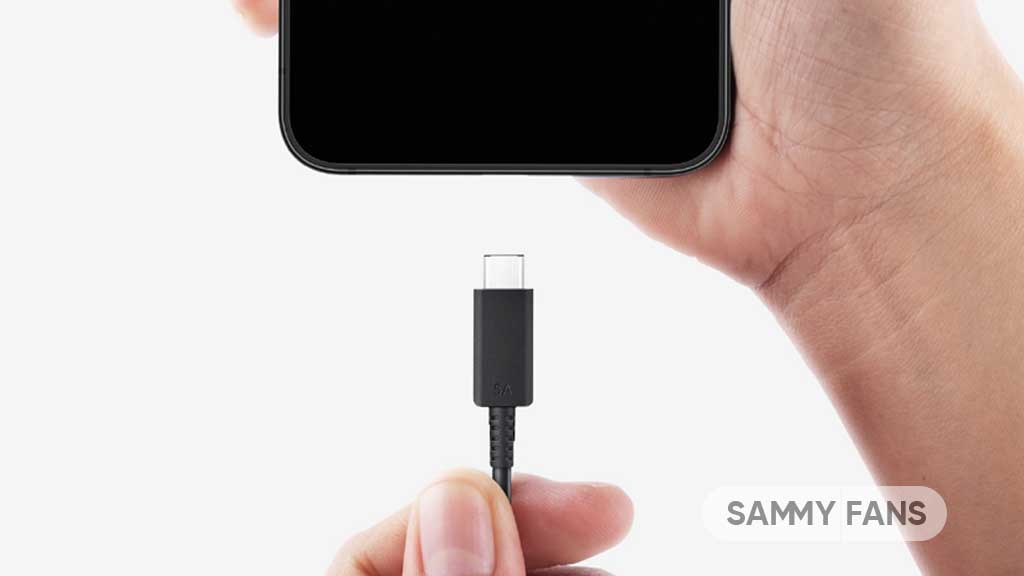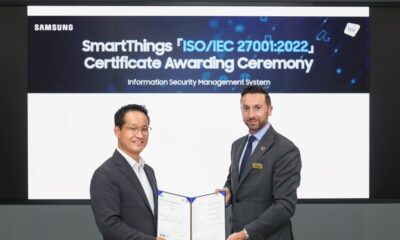News
Is 25W fast charging sufficient for Samsung Galaxy smartphones?

Unlike rivals, Samsung brings upgrades to its new flagship smartphones generation by generation. The recently launched Galaxy Z Fold 4 and Flip 4 can’t be defined as “revolutionary,” while they are just minor upgraded versions of their predecessors.
While the South Korean tech giant is bringing minor upgrades (at least) with each generation of phones, the charging speed is an exception here. The Galaxy Z Fold 4 and Galaxy Z Flip 4 feature the same 25W charging support, exactly the same as the last year’s Fold 3 and Flip 3.
Samsung calls 15W and 25W charging speeds – “Fast charging,” which doesn’t make sense if we have a look at the recently launched smartphones by non-Samsung OEMs. Well, Samsung claims that its 25W charging adapter has the ability to 50% charge Galaxy phones in 30 minutes.
At the same time, there are some smartphones that are claimed to have the ability to charge 100% in less than 30 minutes, which is beyond Samsung’s limits. Phones from Oppo, Vivo, and Xiaomi are not available in North America, but the trio of OEMs is offering massive fast-charging tech.
Well, the OnePlus 10 Pro is available in the United States with 65W fast charging support, the OnePlus 10T is beyond that with 125W charging speeds stateside. It’s worth mentioning that the same model is offering up to 150W fast charging in markets outside the US.
65W fast charger fully charges the OnePlus 10 pro in under 40 minutes, while the 125W adapter takes half of this time for the 10T. So how Samsung can assume its “25W charging tech” a “fast charging” while there are a lot of phones offering massive support up to 125W?
Samsung’s latest Galaxy Z Fold 4 starts at $1,799 in the United States, it sounds like a failure in charging speeds due to its tiny 25W support even after having top-grade and latest hardware installations. OnePlus focuses on the Indian and Chinese markets, but what will be in the future when Chinese makers start gaining popularity in the US?
Similar to Apple, we don’t, Samsung and Google will bring faster-charging speeds on paper like the Chinese vendors. Meanwhile, it’s worth mentioning that the Galaxy Note 10+ and Galaxy S22 Ultra offer up to 45W fast charging support, which sounds a bit satisfactory.
Is 25W fast charging sufficient for Samsung Galaxy smartphones? Let us know through social media…
News
Here’s why Google Messages replaced Samsung Messages on Galaxy devices

Samsung’s latest foldable phones come with Google Messages by default. The company has now revealed the reason behind this move on Galaxy devices. Samsung says Google Messages replaced Messages to foster RCS adoption.
According to AndroidAuthority, a source explained Samsung’s decision to switch to Google Messages as the default messaging app. The recently released Galaxy Z Flip 6 and Z Fold 6 come with Google Messages with RCS enabled by default.
Looks like promoting Google Messages on Galaxy devices will boost RCS adoption. Samsung Messages isn’t already installed on newer phones. However, one’s stopping you from getting it on your Galaxy from the Galaxy Store.
While many apps support the RCS feature, Google Messages offer the best user experience. Making it a default messaging app is an effort to boost the adoption of RCS tech. Apple is also preparing to bring RCS chat functionality to iMessage for iPhones.
What Samsung source said:
- Even if messaging apps follow the RCS standard, the availability may be limited depending on which app the other party uses. That’s why we decided to make Google Messages the common messaging platform, allowing Galaxy users to communicate more freely. This also enables a messaging app to respond to changes of the RCS standard more quickly and efficiently.
Previously, Samsung devices launched in the US came with two messaging apps. This time, the company has removed the Samsung Messages. During the first setup, users are notified that Google Messages is the default messaging application.
News
Samsung SmartThings gets ISO 27001 certified

Samsung SmartThings gained the international standard ISO/IEC 27001:2022 certification. The company has officially announced this major development in its global connected living platform.
SmartThings received ISO/IEC 27001:2022 certification for information security management systems. Certification reiterates that the SmartThings Cloud operates per international standards.
To be certified, a company has to meet the standard across a total of 123 detailed items, including policies for information security, access control for information assets, and incident response.
SmartThings receiving the ISO 27001 certification is the result of our sustained focus on the protection of information in a hyper-connected world with exponentially increasing intelligence.
Seungbum Choi, Executive Vice President and Head of Device Platform Center at Samsung Electronics said “this is just another step in our drive to fortify the platform’s security. We will continue to find new ways to ensure that SmartThings’ personalized services are provided even more safely.”

BSI Prez says that they have recognized that the operation capability and security level of Samsung SmartThings is excellent. It will further boost trust in the SmartThings platform and strengthen business competitiveness.
ISO 27001 is the leading global standard for ISMSs and was established by the International Organization for Standardization. It provides companies with guidance to manage the risks to information assets systematically and achieve information protection goals.
News
Dr.diary fuels Samsung Health with glycated hemoglobin algorithm
Samsung Health app integrated the Dr.diary (Doctor Diary) glycated hemoglobin feature. The blood sugar management platform announced the launch of its glycated hemoglobin estimation functionality on Samsung’s Health application.
According to ETNews, Dr.diary announced the integration of a glycated hemoglobin level feature in Samsung Health. Galaxy users will now be able to check the estimated glycated hemoglobin level provided by Doctor Diary.
To activate the feature, Health app users will have to permit certain conditions of data in the Blood Sugar service. It is worth noting that glycated hemoglobin is a key figure for diabetes diagnosis, which users will find worth using in the Health app.
Established in 2017, Dr.diary is a blood sugar management platform. It analyzes and predicts the changes in glycated hemoglobin using its own algorithm. Earlier this year, the firm secured a patent for “glycated hemoglobin estimation based on blood sugar data table.”
Song Je-yoon, CEO of Doctor Diary, said, “With our predicted glycated hemoglobin level prediction algorithm being installed in Samsung Health, more people will be able to recognize their glycated hemoglobin level and manage their health more efficiently.”

Glycated hemoglobin (HbA1c) is a standardized numerical value of the percentage of hemoglobin, such as hemoglobin, which has been glycated by glucose. Glycated hemoglobin reflects the average blood sugar level over the past 2-3 months.
Samsung Health (with Wear OS Galaxy Watch) users can conveniently check their estimated glycated hemoglobin level within the app and use this information to manage their blood sugar levels through diet and exercise.












